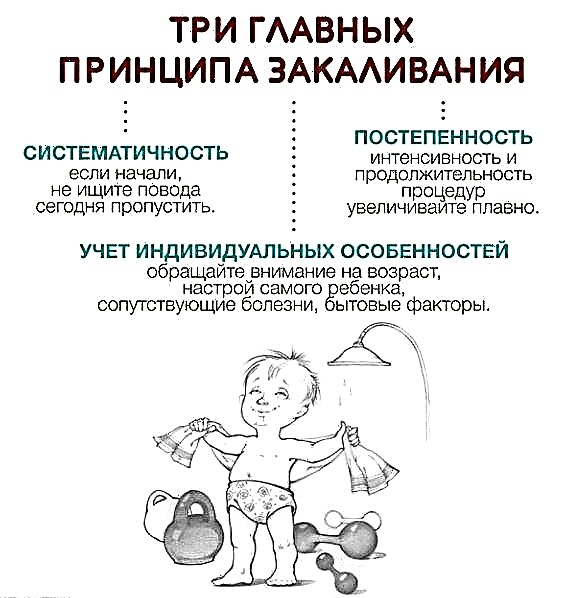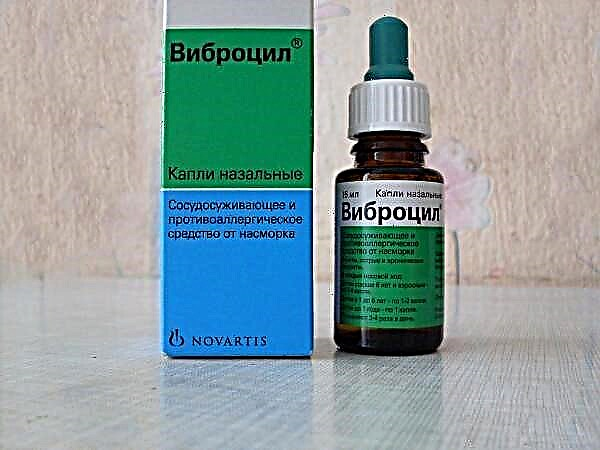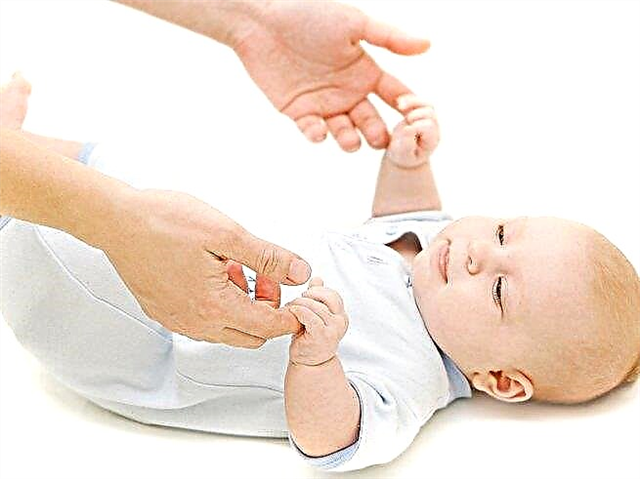In infants, the dermis is structurally different from that of an adult. It is more gentle and not protected from the negative effects of external factors. Therefore, sometimes you can notice how the skin on the fingers of a child's hands is peeling. This symptom should not be ignored - deviations in health may be the cause of the problem.

The baby's skin peels
Features of the skin of a child under one year old
Human skin, regardless of age, is a two-layer "pie" in which the lower layer (dermis) is covered by the epidermis. It performs a protective function, therefore, it itself is a complex structure, consisting of:
- basal;
- prickly;
- granular;
- shiny;
- stratum corneum.
In the lower (basal) layer, cells are dividing, which slowly move to the surface. On the way, a transformation occurs with them: the nucleus is lost, and keratin accumulates. Having reached the upper layer, the cells die, forming a horny layer of scales on the epidermis. They gradually disappear, being replaced by new ones.
Additional Information. In babies in the first weeks, the structure of the epidermis is different - instead of 5 layers, there are only 3 (basal, prickly and horny). Therefore, the process of movement occurs faster, because of which the cells do not have time to mutate and become dense.

Baby's tender fingers
After a month, additional layers begin to form, but up to a year, the baby's skin differs from that of an adult.
Characteristic features of baby skin:
- The epidermis does not interact strongly enough with the dermis. Because of this, the slightest inflammation leads to blistering.
- Until 3 months, the epidermis does not have protective properties due to the fact that the pH of the skin is still neutral. The acidity level increases a little later.
- Skin glands are not yet able to secrete secretions with high bactericidal properties. This is another reason for the poor resistance of the dermis to microbes.
- The immature nervous system is not able to fully regulate the work of the sweat and sebaceous glands. Due to their low activity, the lipid layer turns out to be thin, unable to protect the dermis. As a result, the skin quickly absorbs moisture even with short contact with water.
- The skin itself also contains a lot of fluid. The walls of blood vessels are thin and permeable. Against the background of the immaturity of the systems (immune and central nervous system), this creates good conditions for the development of various skin allergies.
Closer to the year the skin becomes not so "transparent". Due to the formation of additional layers, the epidermis becomes denser. The work of the glands improves, the amount of water in the tissues decreases, the acid balance is normalized. Gradually, the skin acquires protective properties and resistance to microbes.
Anatomy is closely related to physiology. This interaction has its own characteristics. Children's skin differs from adult skin not only in protective properties.
Functional differences between children's skin and adults
| Skin function | Features: |
|---|---|
| Respiratory | It is more developed than that of an adult - through the pores, 10 times more oxygen gets into the baby's body. This is facilitated by the multiplicity of vessels in the dermis and the high permeability of the epidermis. |
| Suction | Due to the thin lipid layer, external agents are well absorbed, which speeds up the process of drug exposure. But many creams and ointments applied to the baby's skin form a dense crust on it, making it difficult for respiratory function. |
| Thermoregulatory | Immaturity of the sweat glands makes the function imperfect. Therefore, the little one is easily overcooled or overheated. |
| Synthetic | Under the influence of ultraviolet radiation, useful substances are produced in the skin that enter the body (among them vitamin D). The function begins to manifest itself by the end of the first month of life |
There are many receptors in the baby's skin that are more sensitive than in adults. This makes tactile contact perceptible enough and allows the tactile function to fulfill its role as much as possible - to interact with the environment.
Because of what the skin on the fingers of the child will peel off
The above-mentioned features of the skin of young children often cause problems that appear on the epidermis (infections, inflammation, cracks, peeling, etc.). Among other things, it is worth considering the factors due to which the skin on the fingers of the child peels off.
Allergy
A similar manifestation can be a reaction to cosmetic, detergents, detergents. Often, peeling of the epidermis is the result of food allergies to citrus fruits, strawberries, chocolate, eggs, honey, etc. Allergens can also include pollen from certain plants and animal hair.
Avitaminosis
If the baby's skin began to peel off on the palms of the baby, one can suspect a malfunction of the synthetic function - the body does not produce enough vitamins A and E. Deficiency of tocopherol and retinol may also be associated with poor nutrition of the baby.
Keratolysis
More often, peeling of the skin on the fingertips in babies manifests itself seasonally: in spring and autumn, this is due to a lack of vitamins. In other situations, triggers include excessive sweating, exposure to the skin by friction or chemicals.
In the latter cases, air-filled bubbles first appear on the body. They open quickly, the edges of the burst blisters do not adhere to the upper layer of the epidermis.
Skin infections
Such diseases of an infectious nature as scabies, lichen, fungus can lead to peeling of the skin in a child. They are dangerous for young children, therefore, require timely medical intervention.

Fungus in a child
Scarlet fever
The infection affects the entire body. Peeling of the skin is one of the accompanying signs that can appear not only in the process, but also after the baby's recovery.
Heat exchange
If the toddler is too wrapped, the heat exchange balance is disturbed. The newborn sweats a lot from overheating, which makes the skin stop breathing. The abundance of sebaceous secretions leads to the development of inflammatory processes in the epidermis, manifested by skin peeling.
Stress
In newborn babies, the psyche is quite unstable, the slightest negative can lead to stress. Emotional background is one of the reasons why a child's skin will peel off on his hands.
Contact with soap
Skin problems can be caused not only by poor hygiene, but also by its abuse. Washing your baby's hands with soap too often removes the grease and makes the skin dry. Fanaticism not only causes peeling - the skin can crack.
Dysbacteriosis
The problem affects the intestines, but it can manifest itself on the palms of the baby. This is due to the use of antibiotics in the treatment of a child. Suppression of beneficial microflora leads to the failure of many functions in the body. The skin is not left without attention either.
Helminths
Worm infestations are manifested by various symptoms. One of the signs of damage is peeling of the skin on the palms.
Types of skin peeling
There are several reasons why the skin on the hands of a child will peel off. Therefore, it is easy to make a mistake on your own with the diagnosis of the problem and choose the wrong direction for its elimination. The description of the types of peeling will help to navigate the situation:
- with food allergies, the process is accompanied by itching, but the symptoms quickly pass if the cause of the problem is removed from the diet;
- with contact allergies (for example, a reaction to soap or cream), peeling captures the fingers, palms, the back of the hand;
- if the chemical effect was single, then the skin will only peel at the point of contact (a chemical has got on the child's finger or palm);
- that the reason lies in infections, you can understand the temperature jumps accompanying the course of the disease;
- if the skin climbs profusely at the junction of the fingers, there is a suspicion of scabies;
- peeling from the sides of the phalanges indicates the presence of a fungus;
- sometimes the skin peels off in spots, in this case the reason can be judged by the color of the mark:
- with psoriasis, it is silvery white;
- dark gray color is a sign of ichthyosis;
- lichen appears pink or red;
- if the child's fingertips not only peel off, but also crack, this may be evidence of a lack of vitamins.

Suspected vitamin deficiency
In most cases, the pattern of peeling on each hand manifests itself in its own way. If the skin began to peel off symmetrically on both limbs, the cause should be sought inside the body (infectious diseases, malfunctions of the digestive system).
How to diagnose symptoms
What diagnosis to give to the baby, the specialist decides. Visual inspection in this case is not enough. A number of other measures will need to be taken:
- hand over:
- a smear or scraping of skin from and around the damaged area;
- blood tests to detect the presence of an infectious disease;
- sowing to determine the presence of helminths;
- be examined by specialists: gastroenterologist, endocrinologist, allergist, dermatologist, neuropathologist.

At a dermatologist appointment
The previous treatment of the little one is taken into account, it is specified which antibiotics were included in the course of therapy. If scabies and other skin infections are suspected, all family members are examined and the household environment in which the baby develops is examined.
Tips for baby skin care
To avoid the described problems, Dr. Komarovsky recommends not to allow them to comply with certain rules.
Hygiene advice
Water procedures are a prerequisite for caring for a baby. Even if a newborn is not yet able to crawl, his skin will peel off when the baby is occasionally bathed. This procedure is necessary - it helps to wash away "extra" particles of the epidermis from the surface.
Since the process of cell movement in babies is faster, then they need to be bathed more often (but not overdo it), adding decoctions of chamomile, oak bark, nettle, string or calendula flowers to the water. At the same time, the soap is correctly selected that does not provoke dry skin.

Important procedure
One of the points of hygiene is cutting the marigolds. In newborns, the plates, although soft, are quite capable of scratching delicate skin. An infection will get into the wounds, as a result, an inflammatory process will develop.
When the problem has already arisen, the grown toenail aggravates the situation. With itching, the baby itches, tears the skin in diseased areas, allowing microbes to go deeper into the dermis. In this case, you will have to put on special mittens on the little one.
Keeping moisture balance
Sometimes the skin can peel off from being too dry. The main reason here is a violation of the hydrobalance of tissues. The human body is 70% filled with water. Fluid is quickly consumed (excreted in urine, sweat), so regular replenishment is required.
Breastfed babies compensate for the lack of moisture with mother's milk - it also has a high percentage of water. With the introduction of complementary foods, there is a need for an additional source of fluid.
Note! The baby's health directly depends on the water-salt balance. Therefore, if the little one began to urinate a little, this is a signal that a malfunction has occurred in the body. Peeling of the skin will become a confirmation.
A child who is thirsty will not be able to explain to his mother what he wants to drink on his own. Starting from half a year (for artificial people earlier), after the main feeding, the child is given baby water in small portions.
Moisturizing creams made specifically for babies will help maintain the hydrobalance of drying skin. They should contain flaxseed oil, sea buckthorn or peach.
Getting the Vitamins You Need
Each cell of the skin requires energy, which is unrealistic to receive with a poor diet. High-grade mother's milk, infant formula fill the body with all vitamins necessary for the development of the child.
Note! Partial and then full transfer of the baby to adult food can provoke vitamin deficiency, one of the signs of which is peeling of the skin.
Vitamins A and E play an important role for the elasticity of the epidermis. Therefore, carrot, pumpkin, plum, peach puree and juices should be present in the baby's diet. When the time comes for protein supplements, periodically the child is given a liver, fish and eggs regularly. Potatoes, oatmeal and corn porridge are useful as a garnish for the skin.
Special attention is paid to the diet at the turn of the seasons. It is during the transition from autumn to winter and the last in spring that the body most often experiences a vitamin deficiency, which causes the baby's immunity to go astray.
Cold season care
Small children are always carefully wrapped for walks in cool weather. Therefore, the risk that the handles of the toddler will freeze is minimal. More often it has a negative effect on the dermis in this case, overheating. The baby's palms sweat a lot, knocking down the water-salt balance in the cells. Diaper rash causes itching, which causes discomfort in the baby.
Children should be dressed according to their temperature. At the same time, they should be warm, but not hot. Mittens are chosen from natural material that does not provoke debate of the skin.
Dangerous symptoms requiring a doctor's visit
When a child has slight peeling on the palms, the back of the hands and near the fingers, this may be a sign of an allergy to food, detergent, or poor-quality cream. It is possible to cope with the problem on your own by eliminating the main factor.

Dangerous symptoms
If the skin begins to burst, hang down with scabs, this is already a reason to look for a serious reason that may be hidden inside. Such symptoms cannot be ignored by specialists.
Dangerous signs that require immediate medical attention are severe itching, fever, blisters or pustules on the skin, constant crying of the baby. They may indicate not only the development of skin diseases, but also be a symptom of a malfunction of the liver, pancreas and digestive system.



